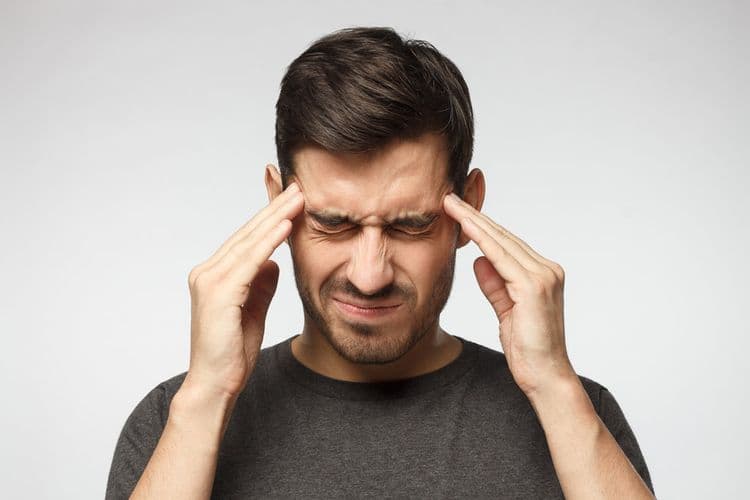Tooth pain and headaches are often interconnected through the trigeminal nerve, which is responsible for sensation in the face and head. Dental issues such as cavities, infections, or misalignments can lead to nerve irritation, causing referred pain in the cranial region. Understanding the underlying dental conditions contributing to headaches is essential for effective treatment. Delving into the anatomy and mechanisms linking these pains uncovers pivotal insights into oral health’s impact on overall well-being.
Understanding the Anatomy of Tooth and Head Pain
Although often perceived as distinct issues, tooth pain and headaches can share a common anatomical and physiological basis, illustrating the intricate interplay between oral and craniofacial structures. Tooth anatomy includes nerves, blood vessels, and connective tissues that are integrated within the cranial nerve system, particularly the trigeminal nerve, which plays a vital role in pain pathways. Headache anatomy often involves complex neural networks, including the same trigeminal nerve, which is a key conduit for nociceptive signals. These nerve connections can facilitate the transmission of pain from dental origins to the head, manifesting as headaches. Understanding this shared anatomical framework provides insight into how disturbances in oral health can influence craniofacial discomfort, highlighting the significance of thorough evaluations in patient care.
Common Dental Issues Linked to Headaches
When dental issues arise, they can frequently be linked to headaches due to shared nerve pathways and physiological responses. Tooth sensitivity, often caused by enamel erosion or gum recession, can activate trigeminal nerve branches, leading to referred pain manifesting as headaches. Additionally, dental infections such as abscesses provoke systemic inflammatory responses. This inflammation can enhance nociceptive signaling, potentially contributing to cephalalgia. As bacteria proliferate, the release of toxins and inflammatory mediators exacerbates discomfort both locally and cranially.
Patients experiencing such symptoms should seek prompt dental evaluation. Addressing tooth sensitivity with desensitizing agents and managing infections through antibiotics or endodontic procedures may mitigate headache occurrences. Understanding these interconnections empowers individuals to pursue appropriate dental care, consequently alleviating headache symptoms linked to oral health issues.
The Role of the Temporomandibular Joint (TMJ)
Beyond the domain of dental issues, the temporomandibular joint (TMJ) plays a notable role in the manifestation of headaches. This joint connects the jawbone to the skull, facilitating essential functions, including speaking and chewing. TMJ dysfunction, a condition characterized by pain and compromised movement, can precipitate headaches due to its proximity to cranial nerves and muscles. Patients often engage in jaw clenching, either consciously or unconsciously, exacerbating the stress on the TMJ and contributing to tension-type headaches. Diagnostic evaluation may involve imaging studies and palpation to assess joint function. Treatment protocols typically include physical therapy, occlusal splints, and pharmacological interventions aimed at alleviating pain and restoring normal joint operation. Addressing TMJ dysfunction may considerably reduce headache frequency and intensity.
How Bruxism Contributes to Head Pain
Bruxism, the habitual grinding or clenching of teeth, greatly contributes to head pain through its impact on the masticatory muscles and adjacent structures. The repetitive and excessive forces generated by jaw clenching lead to muscle fatigue and inflammation. This process triggers a cascade of bruxism effects, such as tension-type headaches and myofascial pain. Patients often experience discomfort in the temporalis and masseter muscles, which are primary contributors to head pain. Chronic bruxism may exacerbate stress on the temporomandibular joint, further intensifying pain and discomfort. Dental professionals advise patients to use occlusal splints or engage in stress management techniques to alleviate symptoms. Understanding these bruxism effects is essential for effective management of associated head pain and improving patient quality of life.
Sinus Infections and Their Impact on Teeth and Headaches
Sinus infections, medically termed sinusitis, greatly impact dental health and contribute to headaches through the proximity of the sinus cavities to the oral and cranial structures. The sinus anatomy consists of air-filled spaces within the skull, including the maxillary sinuses situated above the upper teeth. Inflammation or infection in these cavities can exert pressure on adjacent dental roots, mimicking toothache and complicating diagnosis. Concurrently, sinusitis can induce headache symptoms due to increased sinus pressure affecting cranial nerves. Effective management requires differentiating between dental pain and sinus-related discomfort, often necessitating imaging to assess sinus health. Patients experiencing concurrent tooth pain and headaches should seek medical evaluation to determine if sinusitis is the underlying cause, ensuring appropriate treatment and relief.
The Connection Between Tooth Alignment and Headaches
Tooth alignment plays a critical role in craniofacial muscular function, with misalignment often leading to muscle strain, which can manifest as tension headaches. Malocclusion, or improper bite, exacerbates tension in the temporomandibular joint (TMJ) and surrounding musculature, potentially triggering cephalalgia. Patients experiencing recurrent headaches should consider an orthodontic evaluation to assess whether dental alignment issues are contributing to their symptoms.
Misalignment and Muscle Strain
Although often overlooked, the alignment of teeth plays a crucial role in the overall balance of the craniofacial musculature, which can greatly impact the frequency and intensity of headaches. Misalignment of teeth can lead to improper jaw alignment, resulting in uneven distribution of force during mastication. This imbalance exacerbates muscle tension within the masticatory muscles and temporomandibular joint (TMJ). Consequently, the surrounding muscles in the head and neck region may become strained, contributing to tension-type headaches. The chronic strain on these muscles can trigger a cascade of neuromuscular responses, potentially leading to headache episodes. Patients experiencing unexplained headaches should consider a thorough dental evaluation to assess tooth alignment, as correcting these issues might alleviate associated muscle strain and reduce headache occurrences.
Bite Issues and Tension
When considering the intricate relationship between dental occlusion and cranial discomfort, it becomes evident that bite issues greatly contribute to tension headaches. Improper bite alignment, often referred to as malocclusion, disrupts the harmonious function of the masticatory system. This misalignment exerts undue stress on the temporomandibular joint (TMJ) and associated muscular structures, leading to increased muscle tension. The masseter and temporalis muscles, pivotal in mastication, may become hyperactive, fostering an environment conducive to tension-type headaches. Additionally, chronic muscle tension may radiate pain to the forehead and temples, mimicking primary headache disorders. Patients experiencing recurrent headaches should seek dental evaluation to assess occlusal discrepancies. Corrective measures, such as orthodontic treatment or occlusal adjustments, can ameliorate bite-related headaches, enhancing overall cranial health.
When to Consult a Dentist for Headache Relief
For individuals experiencing persistent headaches, especially those accompanied by dental discomfort, consulting a dentist might be an essential step toward effective relief. Dental issues such as tooth sensitivity can act as headache triggers by affecting the trigeminal nerve, a significant cranial nerve involved in both dental pain and headache pathways. Persistent headaches may indicate underlying dental pathology, such as cavities, periodontal disease, or bruxism, which exacerbate discomfort. A dentist can perform a thorough oral examination, identifying any dental conditions contributing to headache symptoms. Diagnostic tools like X-rays and bite analysis could reveal misalignments or decay impacting nerve function. By addressing these dental issues, patients may find significant headache relief, underscoring the importance of dental consultations when headaches are linked to oral health concerns.

Effective Dental Treatments for Reducing Headaches
Understanding the intricate relationship between dental health and headache relief begins with accurately identifying dental pain sources, such as temporomandibular joint disorders or malocclusion. Modern dental treatment options, including occlusal adjustments and custom-fitted night guards, play a pivotal role in alleviating headache symptoms linked to these issues. Additionally, integrating preventive oral health strategies, such as regular dental check-ups and maintaining ideal oral hygiene, is essential in mitigating the recurrence of headaches associated with dental problems.
Identifying Dental Pain Sources
A considerable proportion of headache sufferers may find relief through addressing underlying dental issues, as numerous studies have suggested a strong correlation between dental pain and headaches. Identifying dental pain sources requires an extensive evaluation of oral health. Tooth sensitivity often results from enamel erosion or gum recession, exposing dentin and causing nerve irritation. This irritation can radiate to cranial nerves, potentially triggering or exacerbating headaches. Dental caries, fractured teeth, or periodontal disease can also contribute to this discomfort. A thorough clinical examination, including radiographic imaging, can help pinpoint these issues. Patients are advised to seek prompt dental consultations if experiencing persistent or unexplained headaches, as timely diagnosis and management of dental pain sources can greatly mitigate headache frequency and severity.
Modern Dental Treatment Options
The interplay between dental health and headaches underscores the importance of addressing oral issues to alleviate cranial discomfort. Modern dental innovations offer a range of cutting-edge therapies designed to target the underlying causes of tooth pain that may contribute to headaches. Treatments such as laser dentistry provide minimally invasive options for addressing issues like periodontal disease, reducing inflammation, and promoting tissue regeneration. Additionally, advanced occlusal adjustments using digital technology precisely realign the bite, mitigating tension that could lead to headaches. Endodontic microsurgery, utilizing high-magnification instruments, can effectively treat complex root canal infections, preventing referred pain. By employing these state-of-the-art methodologies, dental professionals can greatly reduce headache occurrences, ensuring thorough patient care and improving overall quality of life.
Preventive Oral Health Strategies
While it may not always be apparent, the correlation between preventive oral health strategies and headache reduction is significant. Scientific evidence supports that regular oral hygiene practices, including thorough brushing and flossing, play an essential role in mitigating dental issues potentially linked to headaches. Consistent dental checkups are imperative for early detection and management of oral pathologies, such as periodontal disease, that may contribute to craniofacial pain. During these checkups, dental professionals can identify malocclusions or temporomandibular joint disorders (TMJ), which are often implicated in headache pathogenesis. Additionally, the implementation of customized oral appliances can alleviate stress on the jaw, further reducing headache occurrences. Consequently, adherence to preventive oral health measures is essential for individuals susceptible to headache disorders.
Preventative Measures to Protect Dental and Head Health
Ensuring ideal dental and head health necessitates a multifaceted approach focused on both prevention and early intervention. Oral hygiene stands as a cornerstone, with regular brushing and flossing recommended to minimize bacterial proliferation and plaque formation, both of which can precipitate dental complications and referred pain such as headaches. Concurrently, stress management is imperative; chronic stress is closely linked to bruxism, which not only deteriorates dental structures but also contributes to tension-type headaches. Regular dental check-ups are advised to detect and address any emerging issues swiftly. Additionally, adopting ergonomic postures and incorporating relaxation techniques such as mindfulness can further alleviate musculoskeletal strain, thereby reducing headache frequency and intensity. This all-encompassing strategy is pivotal in safeguarding both dental and cranial well-being.
Frequently Asked Questions
Can Stress-Induced Tooth Clenching Lead to Headaches?
Tooth clenching, often a stress response, can exacerbate tension in the jaw and temporal muscles, potentially leading to headaches. Stress relief strategies, including relaxation techniques and cognitive behavioral therapy, may alleviate symptoms by reducing clenching frequency.
Are Children Prone to Headaches From Dental Issues?
Research indicates that dental anxiety in children can exacerbate or contribute to pediatric headaches. Dental issues, including misalignment or decay, may trigger or intensify headaches, requiring careful evaluation and management by pediatric dental and medical professionals.
Can Wisdom Teeth Cause Headaches?
The headache connection with wisdom teeth arises from pressure and inflammation in the jaw, affecting adjacent nerves. Dental professionals recommend monitoring for symptoms such as persistent headaches, advising evaluation to determine if wisdom teeth extraction is necessary.
Do Dental Fillings or Crowns Ever Lead to Headaches?
Dental fillings or crown placement can potentially cause headaches due to filling complications or crown sensitivity. Malocclusion or nerve irritation from these procedures may lead to referred pain, necessitating professional evaluation and possible adjustment for symptom alleviation.
Can Tooth Pain Trigger Migraines?
Tooth sensitivity can act as a migraine trigger due to shared neural pathways between dental nerves and cranial nerves. Patients experiencing migraines should consider evaluating dental health to rule out oral causes as potential contributing factors.


